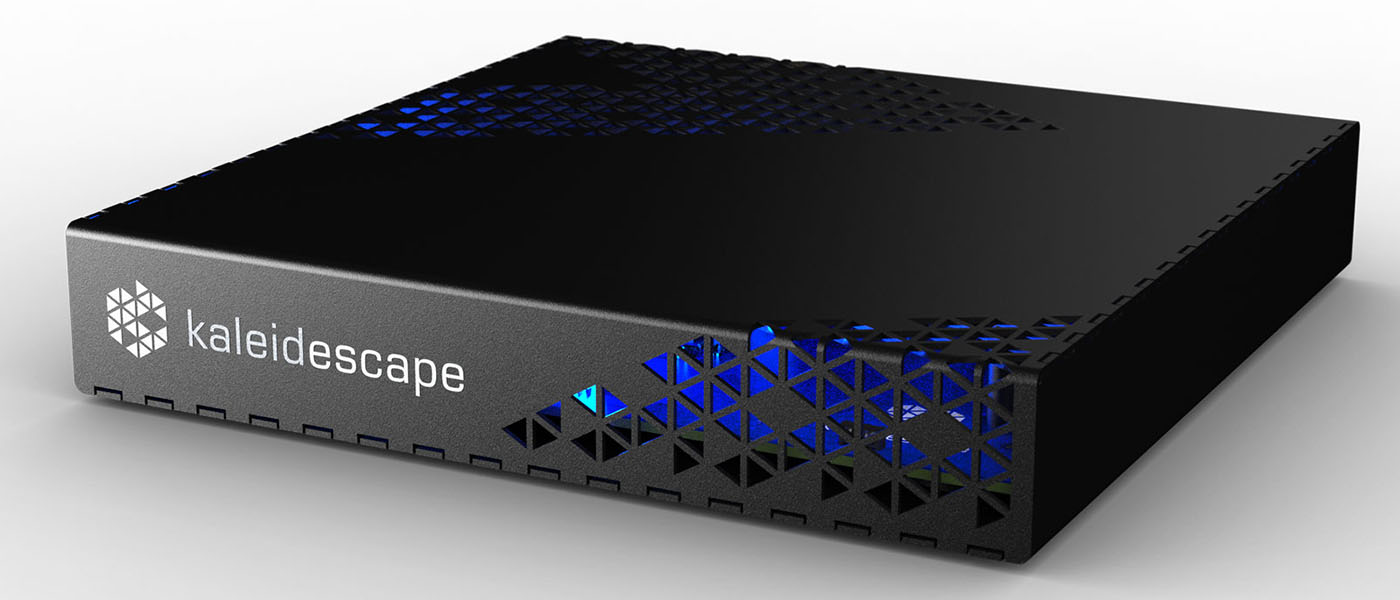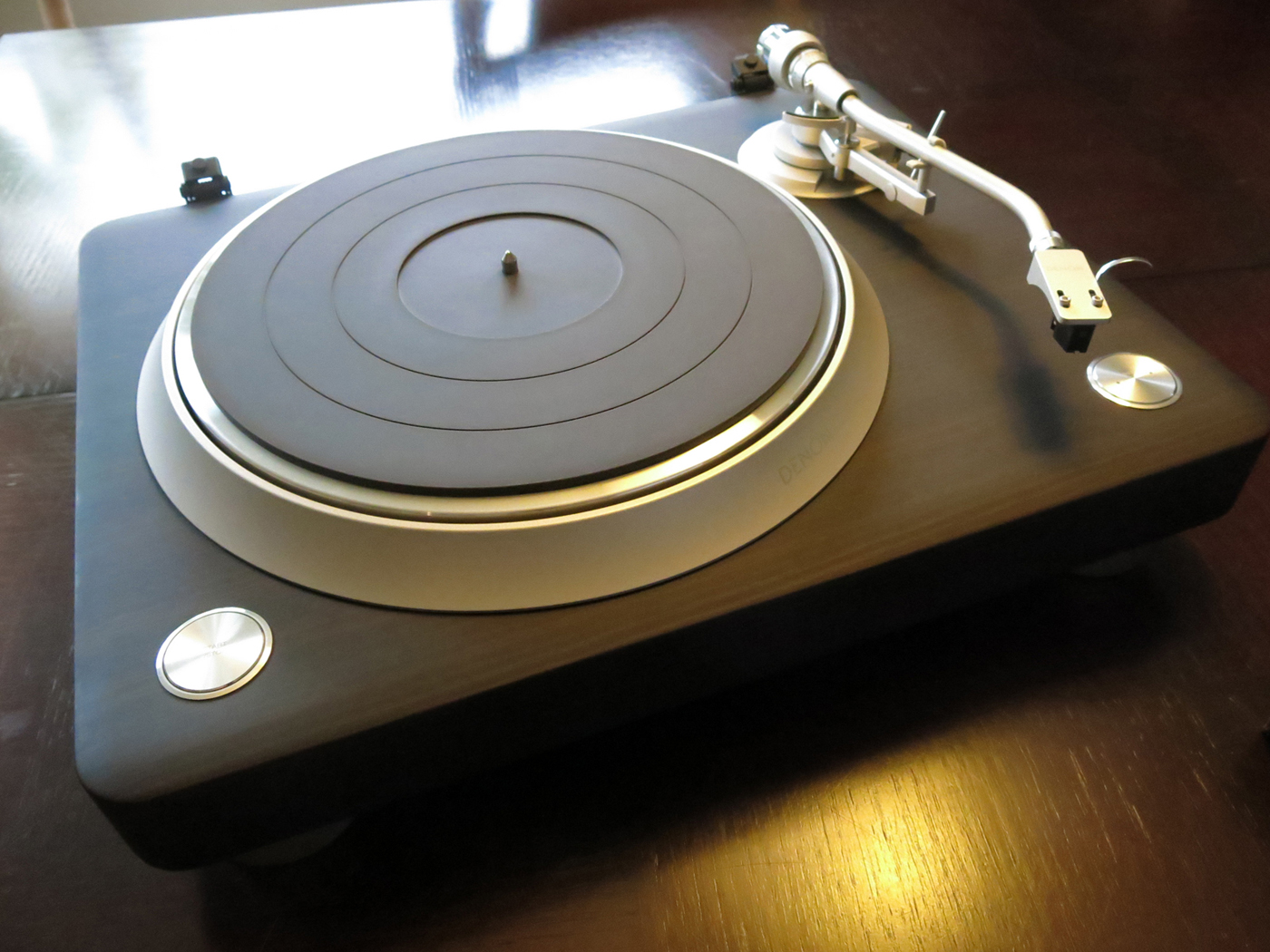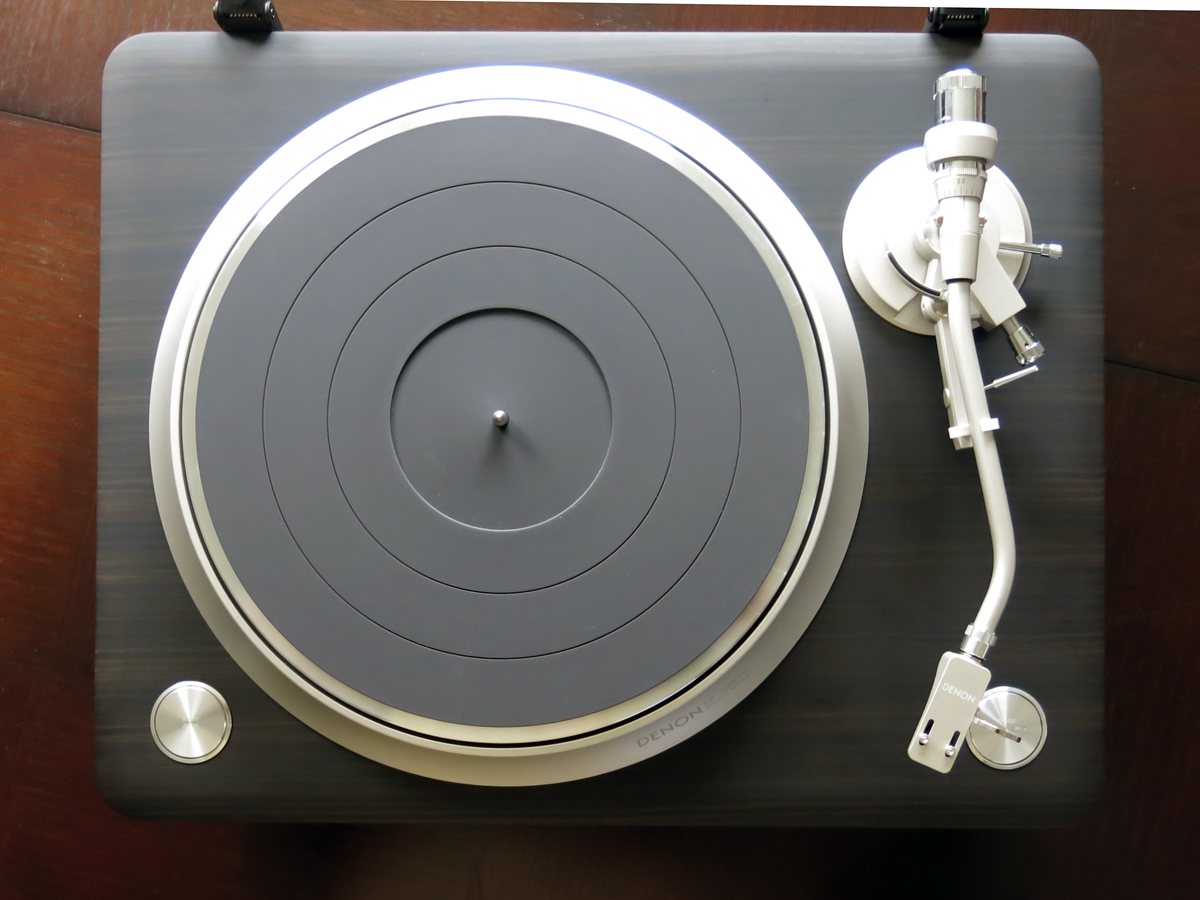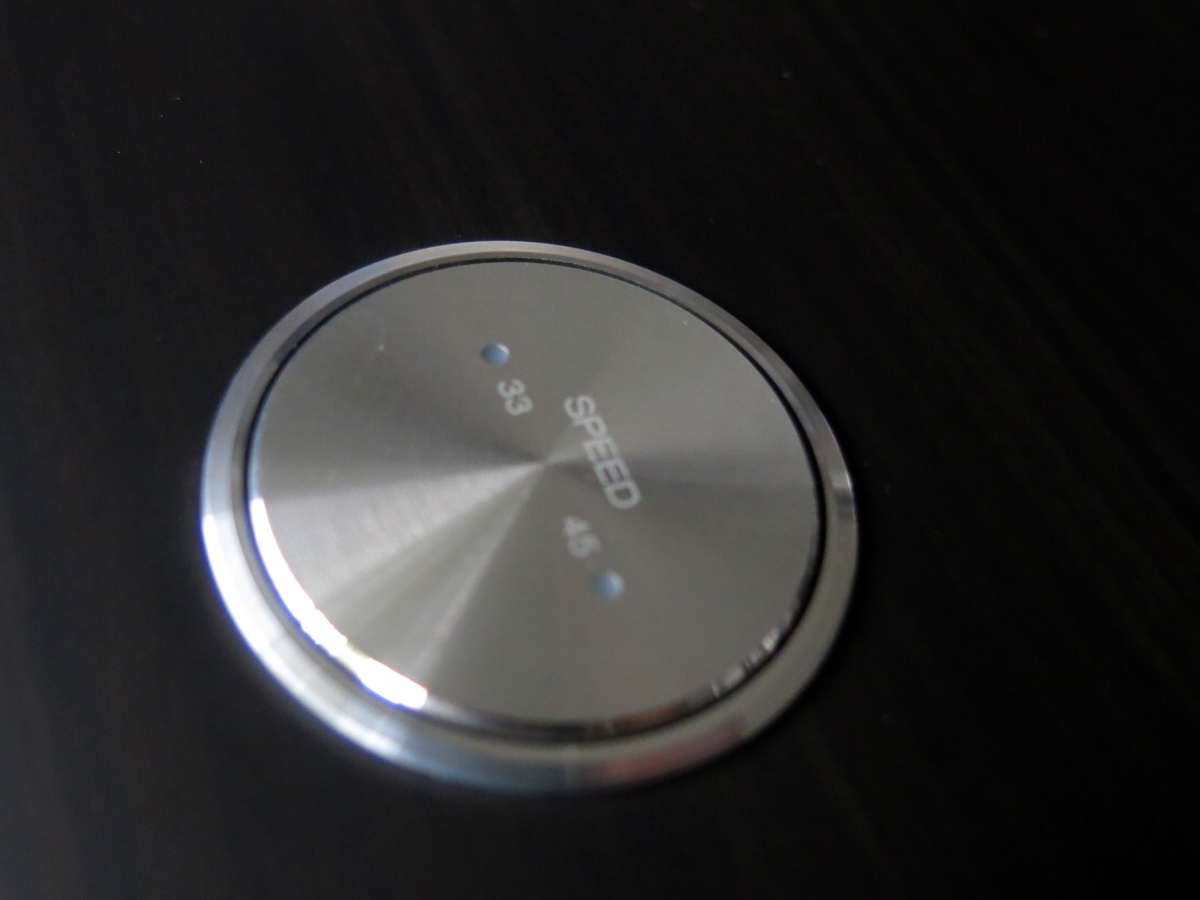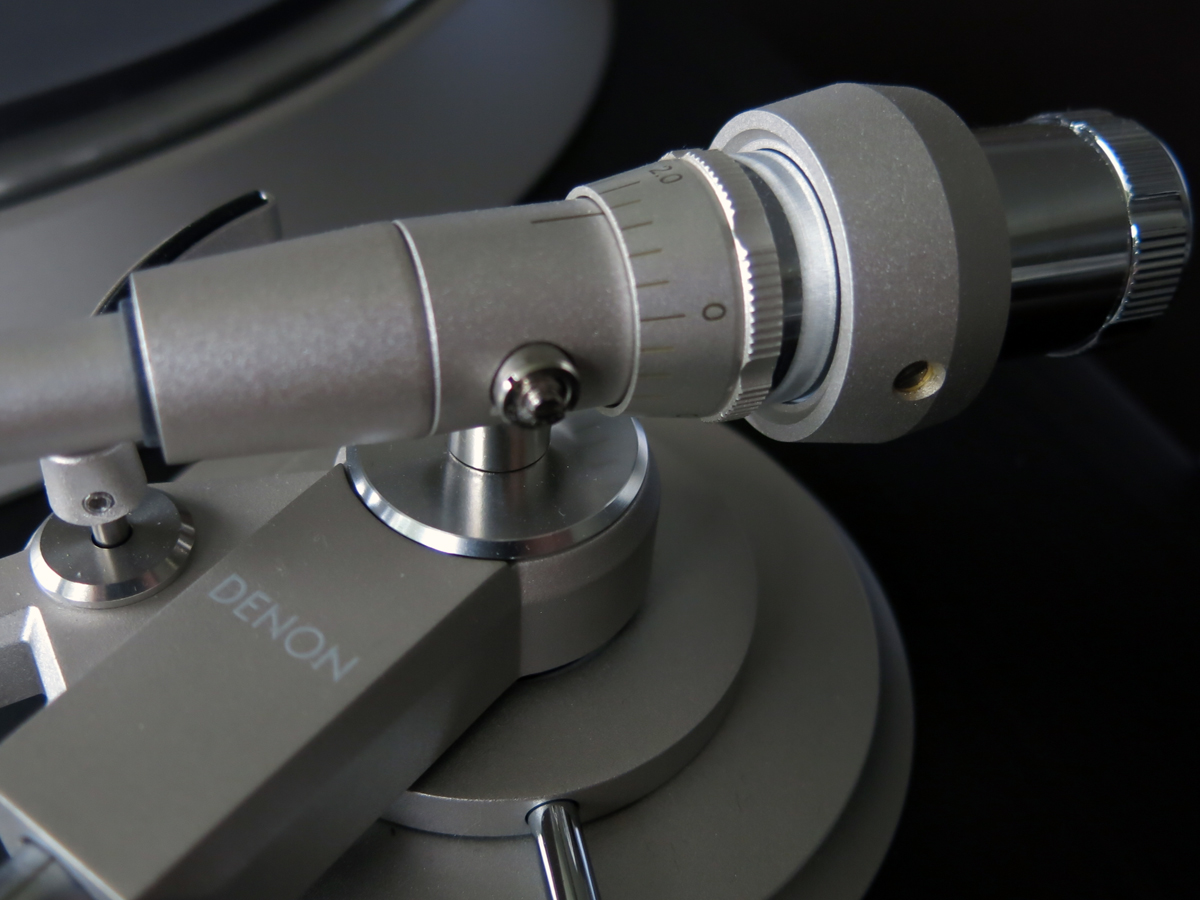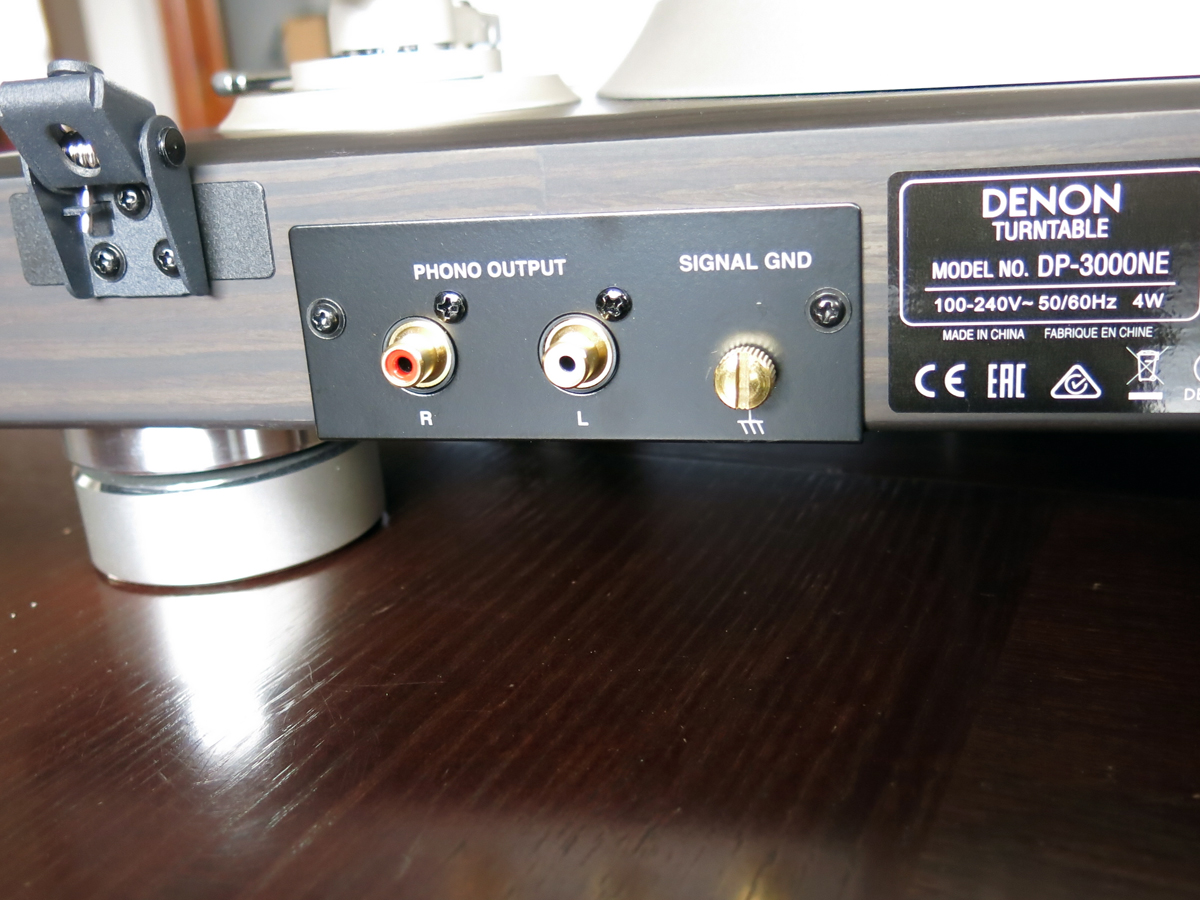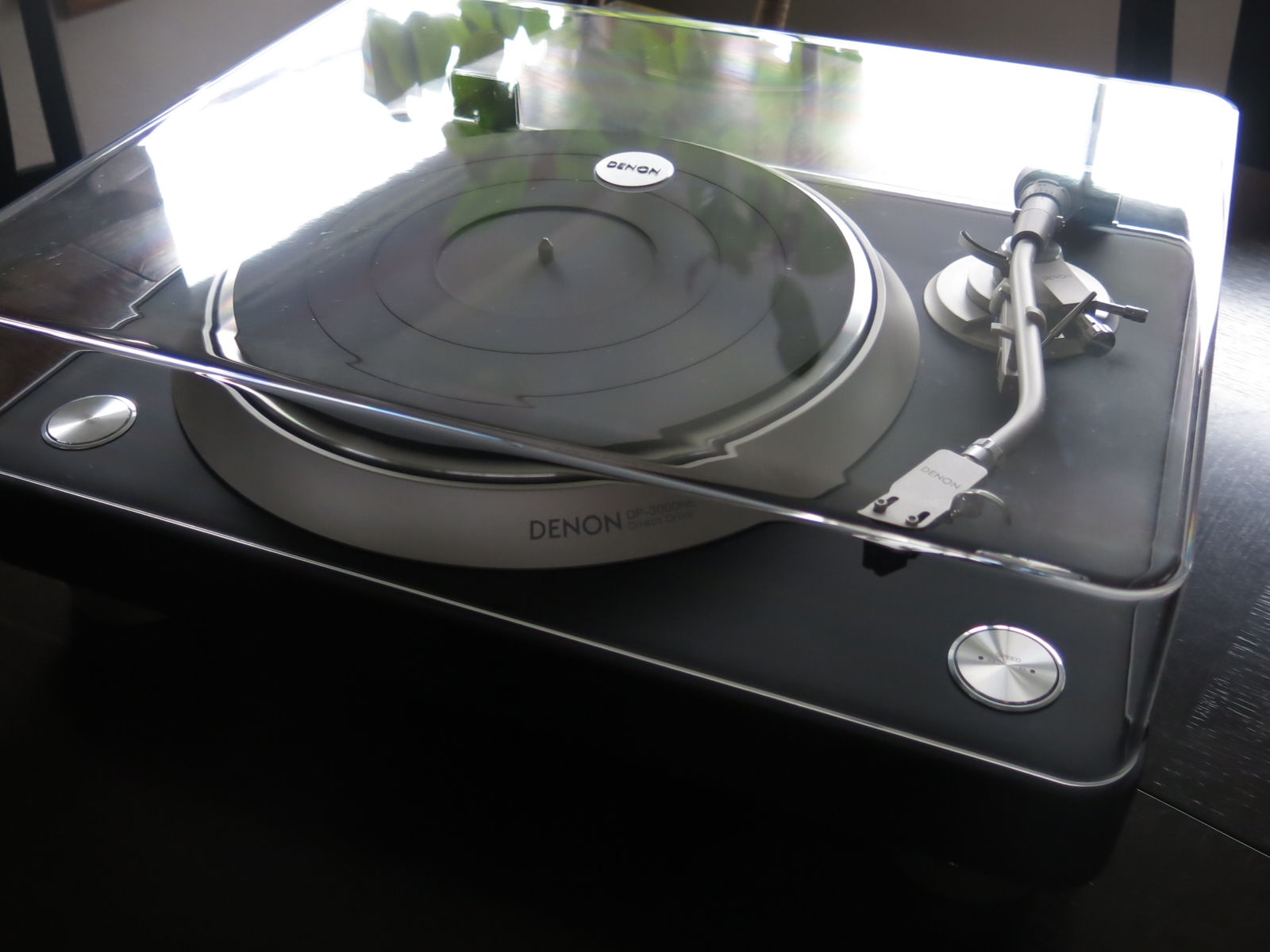The DP-3000NE pulls a tonearm from Denon’s own past and pairs it with an all-new, advanced direct-drive motor and a beautiful, heavyweight plinth to meet those expectations and keep their reputation intact.
I found the ergonomics of the DP-3000NE irresistible. The table is heavy, the dust cover, which is easily liberated from its hinges, is heavy, the adjustable feet are suitably chunky, the buttons are perfectly placed and feel fantastic, and the tonearm setup was a snap. Adjusting the final sound with the mat, cartridge, and cables of my choosing has resulted in many hours of happy musical explorations.
Denon DP-3000NE Turntable
- Beautiful and heavy with space-age speed control
- Gloriously big controls with great feel
- Unique tonearm design
- Height-adjustable footers with vibration isolation built in
- Substantial dust cover that is easily removed
- Interchangeable power and phono cables allow for experimentation and upgrade
First, a disclosure – the normal review process would have a request from the reviewer or the reviewee (ie, the manufacturer) and loaner samples. In this case, I was in need of a turntable and happened to spot a Denon DP-3000NE on US Audio Mart, and if that wasn’t enough, the seller was local to me. Deal! So, I might be more biased to like this table because I paid for it… or am I less biased because I’m not in contact with the manufacturer and so am under no pressure to please them. Sigh. With some help from Secrets editors, I did get to bother Denon representative Jessica Darrican with some questions late in the process; answers are below.
The table came pre-installed with a Hana SH (first generation), and both were barely used. You might wonder…Why is it being sold? The previous owner was enjoying the table but was in the process of being inducted into the Audio Note cult (his words), so he would be switching tables to make his system 100% Audio Note. I was glad to get out of there without being inducted myself.
Turntable Dimensions:
7.3” H (with cover) x 19.7” W x 15.5” D
Weight:
40.8 lbs.
Driving system:
Direct drive
Speeds:
33 1/3 rpm, 45 rpm, 78 rpm
Wow & flutter:
Less than 0.06 % WRMS
Starting time:
Specified speed within 1.0 sec (for 33 rpm)
Starting torque:
3.9 lb/in (4.5 kg/cm)
Platter:
Aluminum die-cast, diameter 12 inches (305 mm) diameter
Motor:
Brushless DC motor
Speed control system:
SVPWM control, Quartz lock
Deviation of rotation:
Within ± 0.5 %
S/N ratio:
More than 70 dB
Tonearm
Arm form:
Static balance S-shaped pipe arm
Effective arm length:
9.6 inches (244 mm)
Overhang:
0.55 inches (14 mm)
Tracking error:
Within 2.5° (max)
Arm height adjustable range:
About 0.35 inches (9 mm)
Stylus pressure variable range:
2.5 g (24.5 mN) / per rotation
One step 0.1 g (0.98 mN)
Suitable cartridge weight:
Without sub weight 4 to 16 g, 15 to 27 g (including the head shell with lead wire, screws, nuts, and washers)
Using sub weight 14 to 26 g, 25 to 37 g (including the head shell with lead wire, screws, nuts, and washers)
Head shell weight:
11 g (including screws, nuts, and washers)
Warranty:
2-year limited warranty for parts and labor
MSRP:
$2799
Website:
Company:
SECRETS Tags:
Denon by Denon, Denon, DP-3000N, turntables, Oyaide, Boston Audio
Secrets Sponsor
The first thing to know – this is a heavy beast. The specs say 41 lbs. It feels like more to me as I am old and weak. I won’t complain, though, because I am a heavy-turntable evangelist. Lightweight tables are susceptible to vibrations from whatever they are on top of and from the air. The amount of motion that a stylus moves while parsing out a record groove is tiny (that is the scientific term) – any extraneous vibrations that shake the table (not just foot falls!) will subtract from what the table arm and cartridge are capable of. The weight is achieved in this case with MDF, which at least serves the purpose, though it cannot be called glamorous. It helps that the MDF is wrapped in a beautiful, dark ebony veneer. In real life, it’s a little lighter in color than in photos. There’s an almost grey cast in certain lighting conditions. There are two buttons, big and inviting. Start the platter rotating with the button on the left, select the speed on the right. You are ready to rock and roll. If you feel more ready to big band it up with your 78rpm records, press the speed button while holding the power button. The platter speed is tightly controlled by an SVPWM-controlled direct drive motor. In my mind, SVPWN stands for Space-Age Vector Power WM (with the W and M just there because they resemble a waveform). Outside my mind, however, it stands for Space Vector Pulse Width Modulation. You can call it what you like, but it will still be a method to drive an electrical motor at a constant speed, which is what we want on our turntables. SVPWM has been around for decades, though not much in turntables. Denon selected SVPWM as it is rapidly becoming the favored method for motor control at low speeds. It’s a bonus that SVPWM requires very little power.
The DP-3000NE tonearm is actually not a new design. It is a modern recreation of Denon’s DA-309, which was first seen in 1977 – a tonearm from back in the day. Denon says we should refer to the new arm as the DA-309 as well, but there were a couple of updates made to the unipivot design. The material and finish of the headshell, the color of the anti-skating box, and a revised magnet fixing structure. Most noticeable to the user is the presence of the tonearm lift, which required a redesign of the tonearm base. That new base also adds the ability to adjust VTA. The overall geometry is little changed from the original DA-309, using an S-shaped, extruded aluminum tonearm for an effective length of 9.6 inches. Regarding Dynamic Damping – the goal is to prevent stray vibrations going from the table to the cartridge, via the arm, or in the other direction, dampen any vibrations that do get started in the arm as the needle does its business in the groove. All of this is in keeping with the overall design goals consistent with Denon’s history of making turntables for use in professional broadcasting.
As I look at my 4000 records, I sometimes feel that I must be a bit of a nut. I do find comfort in the extensive design expertise that goes into all of the equipment, however. It proves that I’m not the only nut. Denon’s deep thought regarding tonearm design is a good example. There is some serious engineering here. But I wondered, of all of the Denon tonearms from back in the day, why was the DA-309 chosen as the starting point? The answer was three-fold: 1) It fits the need for a wide compliance range, the ability to support the fecundity of cartridges that we all enjoy in these modern times. 2) The DA-309, due to its vibration dampening, has very low resonance in the key range of 20Hz to 1kHz. And 3) The aesthetics, “classic modern”.
Anti-skate is magnetic and is a snap to adjust. The procedure is combined with setting the stylus pressure – pull out a small plunger at the base of the arm mount, adjust stylus pressure, turn the knob at the end of the anti- skate plunger to match the stylus pressure weight, push the plunger in. The VTA adjustment is via a separate knob on the base, as mentioned.
The manual queuing lever is undamped, but I learned to control cartridge descent in just a few tries. At the other end of the groove, the arm will not lift automatically. As far as I can see, there is no room to install an aftermarket lifter such as the Little Fwend or Audio Technica AT600SR, which I own but can’t fit to either of my tables.
Lastly, the feet – big and beautiful. They also damp unwanted vibrations with a combination of a spring and silicon rubber damping material. The table does not feel like it is floating on springs. Each of the feet is adjustable (for height) simply by turning.
I started with the Denon in my downstairs room, connecting to the QHW The Vinyl first with the interconnects that come with the table, and later with Nordost Blue Heaven, and then Tyr 2 interconnects. Each improved on the last. The Hana SH cartridge is a high-output moving coil with a specified load impedance of 47kOhms. This means using the MM inputs of the QHW. It is possible to select a 47kOhm load through the MC inputs, but the lowest MC gain is 63db which resulted in some clipping when driven through the rest of the system (Simaudio Moon 430HA acting as preamp, two channels of a Parasound Halo A51 driving Voice 22 speakers from Simaudio. Other cables were more of the Blue Heaven and Hiemdahl 2, and a variety of Shunyata power cords from previous generations.)
I was immediately impressed. I had heard plenty of Hana cartridges at hi-fi shows and have read about them, and can confirm a pleasantly detailed high-end free of grain. I think the sound through the mids is on the thin side, though in no way ‘wrong’. In fact, it made me crave more; maybe I’ll get to try out the cartridges higher up the Hana line at some point. As for the Denon’s contribution, tracking was flawless, and speed control, of course, was perfect. I was listening closely for any sort of noise or slight imperfections as the motor made adjustments. I can’t say that I heard that, but I wasn’t hearing the space-black backgrounds that I get upstairs with the Nottingham table. That could be a difference between belt drive vs direct or the motor system or the mat or the phone stage or the rest of the system or a poltergeist or… ack! Why do we bother!? Well, I was able to sort some of this out, actually. Stay tuned.
I made several upgrades along the way. While the Denon-supplied mat is luxurious and makes me feel good about putting a record on it, I knew from previous experience with my old Denon DP-62L (currently under the weather) that the Boston Audio Mat 2 would likely clear up the sound. The graphite material of the Mat 2 does not give any impression that there would be resonance, while the thick rubber of the stock mat certainly does. Switching to the Mat 2 lets the Hana sweeten the presentation with more detail at all frequencies. Bass was more extended and articulate. It was only with the stock mat that I had the impression that this table continued the Denon house sound – somewhat soft and contained.
I switched to an old Dynavector 20XH (precursor to their current 20X2H). I have to say that Dynavector is not getting its due in the hi-fi press. The richness through the mids and increased timbre instrument by instrument made me put the Hana away and not look back. I think there are a couple of things that go on in hi-fi reviews regarding cartridges (and tonearms and turntables) – foremost is the choice of music. If you are listening to sparse recordings of acoustic instruments, as in jazz or classical, I could see how the Hana might be preferable. I am a rocker, though. The other thing is that records tend to sound good. Period. The Hana SH was great. I could live with it, no problem. It’s just a different sound.
A note of caution, this Dynavector *barely* fits in the headshell that comes stock with the DP-3000NE. Adjustments for overhang are not possible. I gather that there should have been some shims included with the table that would have removed the space limitation I encountered. Alas, I think the previous owner neglected to include these in the box. The other way around this limitation would, of course, be some third-party headshell(s) or shims, which could simply be small washers.
I wasn’t done, though, I went on a tweaking bender. I’m a tweaker. I was tooling around Amazon, and the AI overlords there recommended a record mat, the Oyaide BR-12. I ended up going down an Oyaide rabbit hole, but in the end, limited myself to the BR-12 and their R1 wall outlet. I am happy with the outlet – definitely an improvement over the Home Depot standard issue outlet that was in there before. The BR-12, though.. wow.
First, though, I cannot recommend the BR-12. In fact, I would say most people should not try it. Because of the smell. The. Smell. The reason I was in the Oyaide rabbit hole was that while I love the idea of the expert Denon engineers, deep into computation in the mystical land of Japan, designing SVPWM motor control, I love the idea of hi-fi-loving materials scientists in the mystical land of Japan, conjuring up hi-fi tweaks from exotic materials even more. I fully expect SVPWM to work out well. I expect nothing less than alchemy from exotic materials. In this case, the material is tungsten-infused butyl rubber. Well, if there were an unboxing video, you would see me wincing at an intense glue smell once the plastic was breached. That did dissipate after a while, but the rubber remains, and it smells like… rubber. I kept the mat outdoors, in a sheltered spot, for a month. The smell diminished, but there’s enough left that the odor drifts to my listening position from about six feet away. If that weren’t enough, some amount transfers to the record surface as it rests on the mat. This borders on sacrilegious. Thankfully, I found that a short time in my makeshift record drier (dishrack atop an air purifier) returns the records to their scent-free state. Praise be.
But when I’m not smelling the BR-12, I’m shaking my head. There are lots of tweaks where we say ‘the difference is huge’ but we mean it’s bigger than what we think it should be for whatever the tweak was. In this case, the difference is huge, and that is what is meant. I don’t know if it’s the material, which does seem to be somewhere between the stock Denon mat and the graphite Boston Audio in terms of stiffness, or the unique construction with a 1mm concave curvature, but the difference still amazes me. The BR-12 brings out some information that I didn’t know was there, more detail, definition, and separation, especially in lows and mids. Many lyrics that were indecipherable to me were suddenly clear. All etched cleanly from a black background. Highs… probably are diminished a little, but more study is needed. Here’s the odd thing: when using the BR-12, it became rather routine to find a small hair or bit of dust on the stylus at the end of a side. All records have been ultrasonically cleaned and are well-brushed before each play. I didn’t see that the records attracted a lot of dust while playing on top of the BR-12 – more the opposite, in fact. I might guess that by pushing the record into the concave surface of the mat (with a record weight – in this case a 32 oz weight), the stylus is meeting the grooves at a different azimuth that leads to digging stuff out of the grooves. But I did not hear a shift in left-to-right balance, nor did I hear a difference from the edge of the record to the middle. Is the slight slope towards the middle of the record letting the needle “fall” into the groove rather than the normal, where the outer groove pushes it towards the center? This needs further study. After spending a long time with the BR-12, though, I did sometimes find that the treble was diminished too much, and there was a blanket over the sound. This varied record to record, though. Was it just gunk on the needle? Maybe. Was it that heavier, thicker records are not being pushed into the concave mat enough by the record weight? I’m still playing around with the BR-12 and storing it in the garage when not in use. Records are currently supported by the Boston Audio Mat 2 unless I go on another bender.
Okay, that’s a long diversion about record mats, but I think it will be helpful. The other things to know about this table – the control buttons are glorious, a joy to use. They are solid. You can tap them gently, or you can tap them with vigor, and it feels exactly right. The left button is on/off. The right button selects 33 and 1/3, 45, or 78 rpm.
Enough already, did I play some records? Oh yes. The trouble with turntable reviews, though, is the difficulty of sorting out the table and arm contribution from the cartridge and mat. Fortunately, I’ve spent a lot of time with the old DV-20XH, so maybe I can sort a bit.

Amy Winehouse, “Look Across the Water”
My local record store has kept my vinyl habit going lately with releases of live recordings of many of my favorites, The Clash, Talk Talk, and dear Amy. Look Across the Water is from an FM broadcast of a Berlin, Germany concert on October 15, 2007. The vocal gyrations that this woman could and did perform are even more evident on this record than on the BBC recordings double album, Amy Winehouse at the BBC. The depth of the music from the multi-piece band was evident with the DP-3000NE, with perfect pacing and quiet backgrounds. The band is having a blast, and that spills into the room. I tried the record on my upstairs system and found a much more black background was possible as well as some additional timbre. There are many horn passages, and with the Nottingham and DV-XX2 mk2, I could hear into the horns – meaning that honking sound that comes from the bell. Going back to the Denon with the Hana cartridge, it was much more of a blat sound. With the DV-20XH, there was a hint of honk. I do attribute this kind of difference primarily to the cartridge. The quieter background I would attribute to the Nottingham table upstairs.
With all the records I played, however, I was hearing something that I could only think was some version of the micro-variations in speed that is the knock on direct drive tables of yore. I wanted to believe in space-age motor control, but I couldn’t figure out where else to place the blame. I eventually realized that Space-Vector PWM speed control means there is a switching power supply in the table. DOH! I did my own switching – changing the Denon’s power cord to a Shunyata Delta-NR. The NR portion of these cords is to prevent noise from going back up the cord and out to other components. This worked famously. Whatever I was hearing was gone, and the presentation was smooth and sweet. Vocals were clearer, and I heard a bit more of that timbre that was present on the pricy rig upstairs.

The Velvet Underground, “Loaded” (Analogue Productions Pressing)
The problem with liking The Velvet Underground is that there is a constant stream of reissues and new issues of lost recordings and special concerts, etc, etc. Only Brian Eno exceeds this output. Amazingly enough, Loaded was not in my collection when I spotted this seventy-five-dollar (yikes!), 45 rpm audiophile pressing. I am so glad I waited. I am thinking that the sound quality on this record equals or exceeds that of my two UHQR Steely Dan records (Gaucho and Countdown to Ecstasy). Much depends on the original recordings and what music one is in the mood for, and let’s not ignore the fact that this one costs only half as much as UHQR records. That makes me feel good before the needle even meets the groove. Anyway, with the Denon all tweaked out with the Mat 2 and Delta-NR, I was blown away. Highs floated free in the mix with guitar plucks and cymbals clear and sustained. The drive of these mid-tempo tunes moved me like I was listening to Faith No More. Okay, that’s over the top, but the beauty of it all had me enthralled.
For the record, my upstairs system uses a Moon 810LP phono stage to Moon P8 preamp to Moon W-6 monoblocks, connected by Kimber 8TC to Daedalus speakers. Interconnects are balanced Nordost Tyr or Shunyata Omegas, power is from a Shunyata Denali 6000/S v2 and Typhon T2 pairing, and Shunyata power cables of different generations. The turntable is a Nottingham Space Deck with a Dynavector XX2 mk2. All records, no matter where they are played, are cleaned in an Audio Desk Systeme Pro Vinyl cleaner.
Secrets Sponsor
The DP-3000NE Direct Drive Turntable is a table you can be proud to display, and every time you use it, you will continue to appreciate its beauty and the beautiful music that comes out of it.
- Easy adjustments to the tonearm.
- Removable and substantial dust cover.
- Beautiful finish and design.
- Big buttons that feel just right.
- Oil-damped queuing.
- Automatic tonearm lift.
- A straight tonearm.
Much of the joy of turntable ownership will come from the usage and the appearance. The DP-3000NE is about as good as it gets in those arenas. The direct-drive competition in this price range will be largely from Technics, and their offerings cannot win the beauty contest. Most of the joy, though, comes from the music, of course, and there the outcome will depend more on the cartridge and phono stage once the table is in the ballpark. The DP-3000NE is there. I do think the finest belt drive tables will have a lower noise floor and offer a blacker background, but with its modern motor design, this Denon closes that gap considerably. Personally, I would not tell anyone they have to have a belt drive, nor would I tell them they have to have direct drive. Make the decision on other factors, and for sure consider this Denon.


